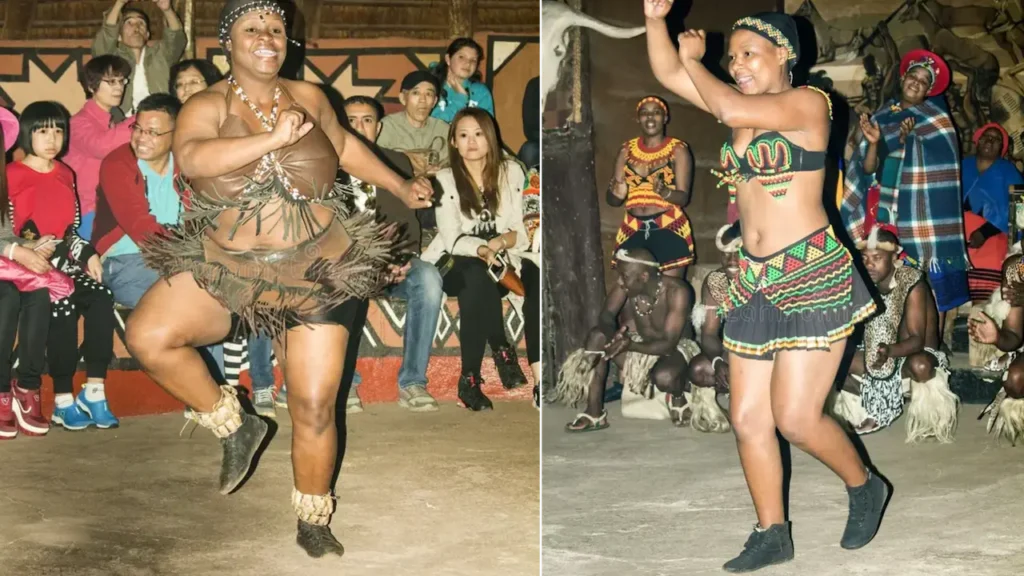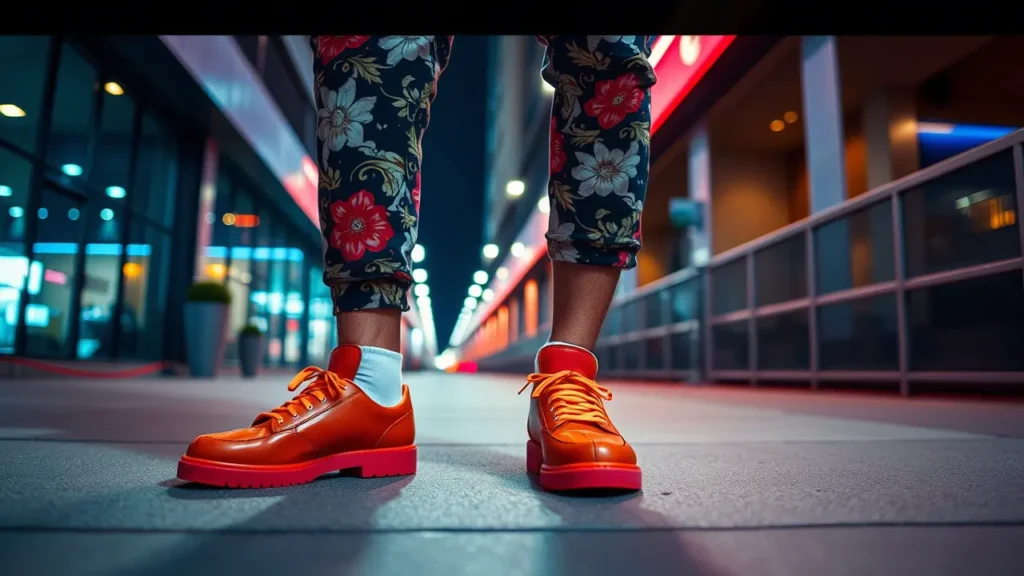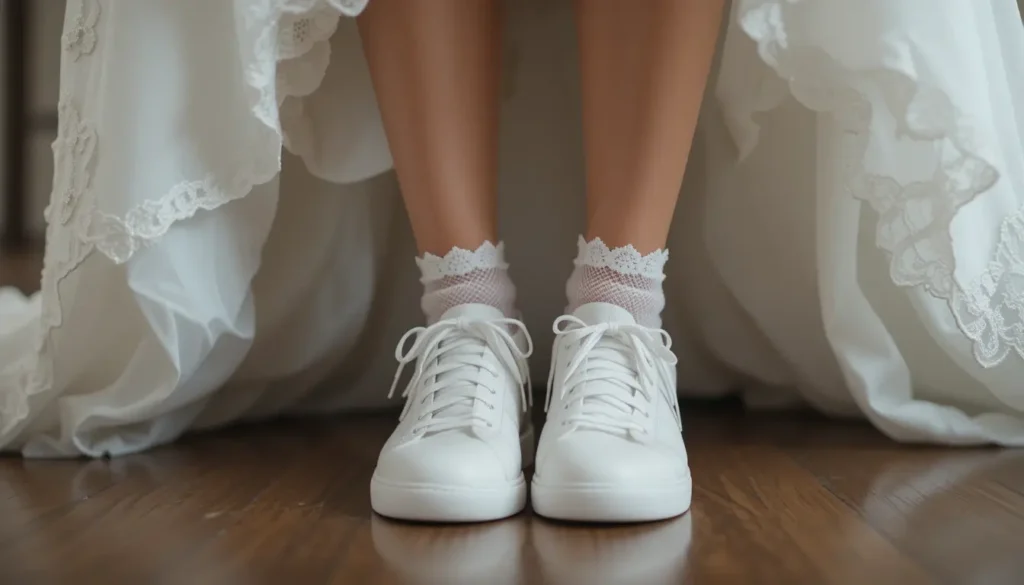Footwear in South African tribal ceremonies goes beyond practicality—it holds deep cultural, spiritual, and symbolic meaning. Among various indigenous groups, traditional footwear is often handcrafted using locally sourced materials and worn during important rites of passage, festivals, and religious rituals.
Each tribe, from the Zulu to the Xhosa, infuses its own identity and heritage into the design and use of ceremonial shoes or sandals. This footwear often signifies status, tribal affiliation, and the specific role of an individual within the ceremony.
Exploring the role of footwear in these tribal contexts provides a unique lens through which to understand the values, traditions, and artistic expressions of South Africa’s diverse cultures.
The Cultural Significance of Footwear in South African Tribal Ceremonies
In a land where every step tells a story, footwear plays a quiet but powerful role in the ceremonies that bind generations together. Across South Africa’s many tribes, shoes—or the lack of them—carry deep meaning. They are not just about protection or fashion. They are symbols of identity, status, and spiritual connection.
South Africa is home to over 60 million people, with 11 official languages and countless cultural groups. Among these, the Zulu, Xhosa, Sotho, and Ndebele peoples hold some of the richest ceremonial traditions. In each of these cultures, what one wears on their feet during rituals and rites of passage matters deeply.
Footwear is chosen based on the event’s importance. During initiation ceremonies, for example, young men walk barefoot as a sign of humility and closeness to the earth. This act shows respect for ancestors and marks a transition from childhood to adulthood.
In weddings and ancestral rituals, beaded sandals or animal hide shoes are worn by elders and leaders. These items are made by hand and passed down through families. Each design tells a story about lineage, marital status, or tribal rank.
Barefoot: A Symbol of Respect and Purity
Did you know that more than 70% of rural South Africans still practice traditional ceremonies? In many of those events, walking barefoot is the norm. It is believed that being barefoot connects the body directly to the spirit of the land.
During mourning rituals or when entering sacred spaces, people remove their shoes. This act is not only respectful—it is also seen as cleansing. The ground is treated as holy, especially in places where ancestors are honored.
Bare feet are also a sign of vulnerability. They show that a person comes without barriers, ready to receive wisdom or guidance. For initiates undergoing rites, bare feet are part of the journey toward strength and self-awareness.
This tradition continues even in modern times. Many urban dwellers return to their villages wearing Western shoes, only to take them off before stepping into ceremony grounds.
Beads, Hides, and Meaning
When footwear is worn, it is rarely plain. Beads, leather, and natural dyes are used to create designs that carry messages. A pair of sandals might feature colors that mark a woman’s marriage status or an elder’s role in the community.
Among the Zulu, beaded shoes are often worn by dancers during umhlanga (the Reed Dance). These shoes shimmer under the sun, matching the rhythm of drums and chants. Each color has meaning—red for love, green for fertility, black for unity.
The making of such footwear is a communal task. Mothers teach daughters how to weave and sew. The process itself becomes a lesson in heritage and patience.
These items are not mass-produced. They are crafted with care, meant to last, and worn only during special moments. That makes them precious in both material and memory.
Footwear as Identity and Status
In South African tribal culture, shoes can say who you are before you speak. A chief’s sandals are different from those of a commoner. A bride’s slippers differ from a widow’s.
Among the Ndebele, for instance, married women wear specific foot coverings that distinguish them from unmarried girls. These styles are subtle but clear to those within the culture.
Youth initiates wear simple hide wraps or nothing at all, showing they are in a learning phase. Once they complete their rites, they may receive new footwear to mark their changed status.
This idea of footwear signaling social position is not unique to South Africa. But here, it is woven into daily life and ritual in ways that remain strong despite modern influences.
Preserving Culture Through Craft
Many young South Africans today grow up in cities, far from village roots. Yet, when ceremonies call, they return. And when they do, they learn again the value of handmade footwear.
Artisans keep the old ways alive by teaching new generations how to craft these meaningful items. Some communities have turned this into small-scale businesses, helping preserve traditions while creating jobs.
Schools and cultural centers now include lessons on traditional dress. Children learn why certain shoes are worn and what they mean. This helps ensure that customs don’t fade away.
As global trends push for faster, cheaper products, local craftsmanship reminds people of the beauty in slow, meaningful work.
Which South African Tribes Use Traditional Footwear in Their Rituals and Why?
More than 80% of South Africans identify with a cultural or ethnic group that practices traditional rituals. Among them, several tribes continue to use specific forms of footwear—or the absence of it—as part of their ceremonies. These traditions are not just about clothing; they are deeply tied to identity, spirituality, and social status.
The Zulu: Beads, Rhythm, and Respect
Among the Zulu people, footwear plays a role in major ceremonies such as weddings, dances, and rites of passage. Dancers at the umhlanga (Reed Dance) often wear beaded sandals made from animal hide and decorated with colors that carry meaning.
Red symbolizes love and energy, green stands for fertility, and black represents unity. These colors are not chosen at random; they reflect the dancer’s role, age, or marital status.
During mourning or ancestral ceremonies, elders may walk barefoot as a sign of humility and respect. This act connects them directly to the earth and to the spirits of those who came before.
Footwear is also used in initiation rituals, where young men prepare to become adults. At certain stages, they may go barefoot to show vulnerability and readiness to learn.
The Xhosa: Bare Feet and Sacred Ground
The Xhosa people place great importance on initiation ceremonies known as ulwaluko . In these rites, young men leave home to undergo training, circumcision, and spiritual guidance.
Throughout this time, initiates walk barefoot. This practice is seen as a way to stay grounded—both physically and spiritually—during a life-changing journey.
Bare feet are believed to allow a direct link between the body and the land, which is considered sacred. It is also a sign of submission to tradition and to the wisdom of the elders.
Once the ceremony ends, initiates may receive new clothing and sometimes simple foot coverings to mark their new status as men.
The Ndebele: Symbols Woven into Every Step
In Ndebele culture, traditional dress—including footwear—is rich with meaning. Married women, for example, wear different styles than unmarried girls. These differences are subtle but clear within the community.
Footwear is often handmade from leather and decorated with beads or stitched patterns. Each design carries a message about the wearer’s family, status, or achievements.
During weddings or coming-of-age events, these items are worn with pride. They help tell the story of the individual within the larger story of the tribe.
This attention to detail reflects how deeply personal and symbolic tribal customs can be. Even small changes in style have big meanings.
The Sotho: Earth Connection and Ancestral Ties
The Basotho people, found mainly in Lesotho and parts of South Africa, also follow traditions where footwear—or the lack of it—has deep significance.
During rituals honoring ancestors, people often remove their shoes before entering sacred spaces. This act shows respect and acknowledges the presence of spiritual forces in the soil.
Traditional Basotho attire includes a blanket wrap and sometimes a conical hat. Footwear, when worn, tends to be simple leather sandals made by hand.
These items are passed down through families and used only during important events. They are valued not just for use, but for the heritage they represent.
The Venda: Nature, Spirit, and Ceremony
The Venda people hold ceremonies that honor nature and ancestral spirits. In many of these, participants walk barefoot to maintain a strong connection with the earth.
During rainmaking or healing rituals, dancers move without shoes to feel the rhythm of the ground beneath them. This connection is believed to enhance spiritual communication.
When footwear is worn, it is usually made from grass, hide, or wood. These items are crafted locally and worn only during cultural events.
Such traditions help preserve the Venda way of life, as modern influences grow stronger in other parts of daily life.
The San: Walking with the Land
The San people, one of the oldest cultures in southern Africa, have lived in harmony with nature for thousands of years. Their rituals often involve walking long distances, sometimes barefoot or in simple sandals made from animal hide.
For the San, the land is not just home—it is part of their spiritual being. Walking barefoot allows them to read the terrain, track animals, and feel the pulse of the earth.
Their ceremonies include trance dances under the stars, where movement and rhythm bring them closer to the spirit world. Shoes are rarely worn during these moments.
Though few in number today, the San continue to pass down their traditions, showing how deeply connected humans can be to the land beneath their feet.
How Does Ceremonial Footwear Differ Among Various South African Tribes?
Over 60 ethnic groups call South Africa home. Each has its own way of marking life’s most important moments. In ceremonies across the land, one thing becomes clear: what people wear on their feet is never just about comfort—it is a language in itself.
In Zulu culture, ceremonial footwear is more than decoration—it is communication. Beaded sandals are worn by dancers during the umhlanga, or Reed Dance, where every color tells a story.
Red means love and strength, green signals fertility, and black stands for unity. These designs are passed down through families, each carrying meaning known only to those who understand the code.
Elders and leaders may wear sandals made from cowhide, showing both status and spiritual readiness. The craftsmanship behind these items is handed from one generation to the next.
Footwear among the Zulu is not just worn; it is honored as part of a living tradition.
Among the Xhosa, bare feet are central to key rites of passage. During ulwaluko , the initiation ceremony for young men, participants walk without shoes for weeks.
This act is not symbolic alone—it is spiritual. Being barefoot connects initiates to the earth and to ancestors, grounding them during a time of transformation.
Even after the ritual ends, new footwear is rarely given immediately. It is a sign that the journey is still unfolding.
For the Xhosa, what is missing from the foot can speak louder than what is worn.
The Ndebele use lines, patterns, and shapes to show identity. This includes what they wear on their feet. Married women, for instance, wear different styles than unmarried girls.
Sandals may be decorated with stitched leather or small beads arranged in geometric forms. These details mark changes in life such as marriage, motherhood, or leadership roles.
Each design follows rules understood within the community. Outsiders may see beauty, but insiders see meaning.
Footwear among the Ndebele is quiet proof that tradition walks with them.
The Basotho people live in mountainous regions where weather shapes daily life. Their ceremonial footwear reflects this connection to nature.
Simple hide sandals are common during rituals, often worn with woolen blankets and animal skins. These items are handmade and used only for special occasions.
During ancestor honoring, some choose to go barefoot, believing that the soil holds the spirit of those who came before.
In Basotho culture, the feet are not hidden. They are part of the landscape and part of the story.
For the Venda, ceremony is deeply tied to music, dance, and the natural world. Many rituals take place outdoors, where bare feet feel the rhythm of drums and earth.
Dancers in rainmaking or healing ceremonies move freely, using the ground beneath them as part of their spiritual practice.
When footwear is worn, it is made from plant fibers or soft hide. These items are light and suited to movement.
The Venda believe that energy flows through the body. Walking barefoot allows that energy to stay unbroken.
The San people have lived in southern Africa for thousands of years. Their ceremonies involve long dances under starlit skies.
During these trance dances, participants wear little or no footwear. Movement and rhythm bring them closer to the spirit world.
Sandals made from animal hide may be worn when traveling to ceremony sites, but once inside, shoes come off.
For the San, walking barefoot is not a choice—it is a way of life.
No two South African tribes wear the same ceremonial footwear. Each group has its own style, material, and reason for what is worn—or not worn—on the feet.
Some use beads to tell stories, others rely on silence and bare skin. Some follow strict rules, while others let nature decide.
What remains constant is the deep respect for tradition. Footwear is not an afterthought—it is part of the ritual.
Every pair, every bare sole, carries meaning shaped by history, belief, and identity.
South Africa is a nation of many voices, many colors, many traditions. Yet in every corner, ceremonies continue, and so do the ways people step into them.
Whether adorned in beads, wrapped in hide, or touching the soil directly, ceremonial footwear shows pride, purpose, and belonging.
These customs are not frozen in time. They live on through each new generation that chooses to carry them forward.
So, across fields and hills, the story continues—one step at a time.
What Materials Are Commonly Used to Make Traditional Ceremonial Footwear in South Africa?
More than 60% of South Africans still take part in traditional ceremonies.In these events, every item worn carries meaning—including the materials used for ceremonial footwear. These items are not bought in stores; they are made by hand, using what the land and ancestors have passed down.
Animal Hide: A Timeless Choice
Animal hide is one of the most common materials used in making traditional footwear. Cowhide, goat skin, and sheepskin are popular choices across many tribes.
These leathers are soft yet strong, shaped to fit the foot and often stitched together with natural fibers or sinew. The hides are treated using age-old methods that preserve their strength and flexibility.
In Zulu and Xhosa rituals, sandals made from animal hide mark status, age, or spiritual readiness. Elders and leaders may wear them during weddings or initiation rites.
This material connects the wearer to nature and to the community’s past, where every piece was valued and nothing was wasted.
Beads: More Than Decoration
Beads play a major role in Zulu and Ndebele ceremonial footwear. They are not just for looks—they carry messages about identity, marital status, and social rank.
Glass beads were once traded goods but now come in many colors. Each hue has meaning: red stands for love, green for fertility, black for unity.
Sandals and foot wraps are decorated with patterns that follow family or regional styles. These designs are taught from parent to child, keeping stories alive through thread and needle.
Beadwork is slow work. It takes patience, skill, and respect for tradition—qualities deeply honored in ceremony.
Plant Fibers: Nature’s Thread
In rural areas, plant fibers are used to make simple footwear or to stitch together other materials. Sisal and reeds are woven into soles or straps.
The San and Venda people often use these natural threads when crafting sandals for dances or healing rituals. These items are light, breathable, and suited for movement.
Some communities twist fibers into ropes that hold leather pieces together without metal or machine-made thread. This method is eco-friendly and rooted in ancient practice.
Plant-based materials show how deeply connected South African tribes are to their environment.
Wood: Solid Steps into Ceremony
Wooden clogs or soled shoes appear in some tribal traditions, especially among the Basotho. These items protect feet during long walks or outdoor ceremonies.
The wood is carved by hand, shaped to fit the foot, and sometimes tied with leather straps. They are sturdy and built to last.
Among the Basotho, these shoes may be worn with blankets and hats during winter rituals or special gatherings. Their use shows respect for both function and form.
Though less common than hide or fiber, wooden footwear holds its place in cultural expression.
Dyes: Colors from the Earth
Natural dyes bring color to ceremonial footwear. Bark, roots, clay, and minerals are used to stain leather and fibers in rich tones.
Red ochre, found in many regions, is a favorite for marking special occasions. Charcoal and crushed plants add black, brown, and green hues.
These colors are not chosen at random. They match the rest of ceremonial dress and often reflect the wearer’s role in the event.
Dyeing is a skill passed through generations, blending art with deep cultural knowledge.
Threads and Stitches: Handmade with Purpose
Stitching is a key part of making ceremonial footwear. Sinew, plant fibers, or cotton thread bind materials together, often in intricate patterns.
Each tribe has its own way of sewing. Some use tight weaves for strength, others prefer open designs that allow breathability.
Mothers teach daughters, and elders guide youth in mastering the craft. These lessons are more than technical—they pass on values and pride.
A well-stitched sandal is not just durable; it is a sign of care, belonging, and heritage.
How Has Modern Fashion Influenced Traditional Footwear in South African Tribal Ceremonies?
More than 70% of South Africans still take part in traditional ceremonies. Yet, as cities grow and global trends spread, the way people dress for these events is changing. Nowhere is this shift more visible than in ceremonial footwear—where ancient styles meet modern design.
In villages and towns across South Africa, young people are blending old and new when it comes to ceremonial wear. Some still wear handmade sandals or go barefoot, but others now pair traditional outfits with modern shoes.
Branded sneakers, stylish flats, and high heels have started to appear at weddings, initiation ceremonies, and cultural festivals. These choices reflect personal style while still honoring tradition.
Elders sometimes question these changes, but younger generations see them as a way to stay connected to culture without giving up their modern identity.
This mix of past and present shows how traditions can evolve without being lost.
Zulu beadwork remains a strong symbol in ceremony footwear. But today, some artisans plastic beads or synthetic threads that mimic traditional ones.
These modern supplies are easier to find and sometimes more durable. They allow for brighter colors and finer detail, which appeals to younger designers.
Some families embrace these updates, seeing them as natural extensions of old crafts. Others stick strictly to glass beads and natural dyes, believing that only true materials carry real meaning.
This balance between old and new keeps the craft alive for different generations.
Urban Influence on Rural Style
As more people move to cities, they bring their traditions with them. In Johannesburg, Cape Town, and Durban, urban fashion blends with tribal roots in surprising ways.
City dwellers may wear Western-style shoes to work or school, but return to their home villages for ceremonies. There, they might choose a mix of handmade leather and modern design for their footwear.
Some buy factory-made sandals that look like traditional ones but cost less and last longer. Others commission custom pairs that combine both styles.
This trend shows how deeply rooted cultural pride remains—among those who live far from village life.
Instagram and TikTok have made traditional styles popular beyond South Africa’s borders. Young designers post videos of beaded sandals, hide shoes, and other ceremonial items gaining global attention.
This exposure has led to fresh takes on old designs. Some creators add bold colors, unique shapes, or new stitching patterns that were not common before.
While purists worry about losing authenticity, others argue that evolution is part of any living culture.
The result is a growing space where tradition and trend walk side by side.
Ceremony Shoes with Comfort in Mind
Traditional footwear was made for function and symbolism, not always comfort. Animal hide sandals and woven grass shoes suited village life, but could feel stiff or rough on hard ground.
Modern materials like foam soles, rubber bases, and soft fabric linings have found their way into ceremonial shoe design. These additions make long dances and rituals easier on the feet.
Some elders accept these upgrades as practical. Others believe discomfort is part of the experience, a reminder of endurance and respect.
Still, the demand for comfort is growing, especially among youth who may not be used to walking barefoot or wearing stiff handmade shoes.
Local shoemakers are adapting to new tastes. Many now offer hybrid styles that honor tradition but include modern touches.
These designers blend hand-stitched details with machine-made parts. They create pieces that are wearable, stylish, and meaningful.
Some have opened small businesses or online shops, making traditional footwear accessible to a wider audience.
This shift helps keep the craft alive, as lifestyles change.
Schools and Culture Programs Teach Both Sides
In schools and community centers, children learn about traditional clothing and footwear. Lessons cover how to make sandals from hide, weave grass soles, and bead intricate patterns.
At the same time, they study fashion design and learn how to sketch, cut, and assemble shoes using modern tools.
These programs help students appreciate the value of heritage while preparing them for creative careers.
They leave with hands full of skill and hearts full of pride.
Older generations play a key role in guiding how traditions are kept. While some resist change, others recognize the need to adapt.
Youth bring energy and fresh ideas. They want to honor ancestors and culture, but also express themselves in ways that feel real.
In many families, discussions happen around what can stay the same and what can change. Footwear becomes a starting point for bigger conversations.
This dialogue ensures that tradition does not stand still—it grows.
Footwear in South African tribal ceremonies serves as more than just attire—it is a meaningful cultural artifact that connects individuals to their heritage, ancestors, and community. Whether used to symbolize leadership, mark a rite of passage, or enhance the spiritual ambiance of a ritual, traditional footwear plays a vital role in preserving tribal identity and storytelling. As modernization continues to influence African traditions, the continued appreciation and study of ceremonial footwear help safeguard these rich cultural practices for future generations.




